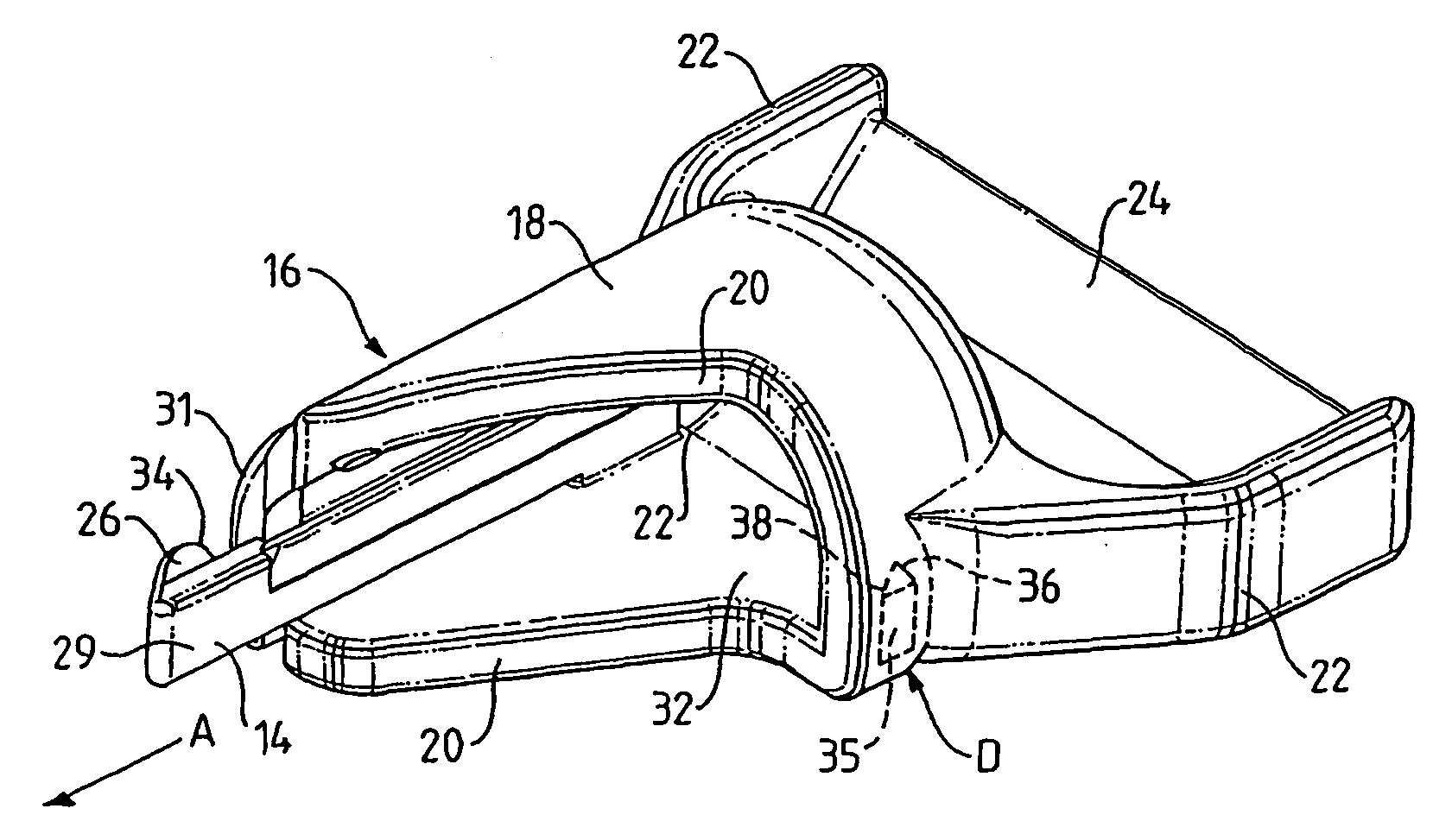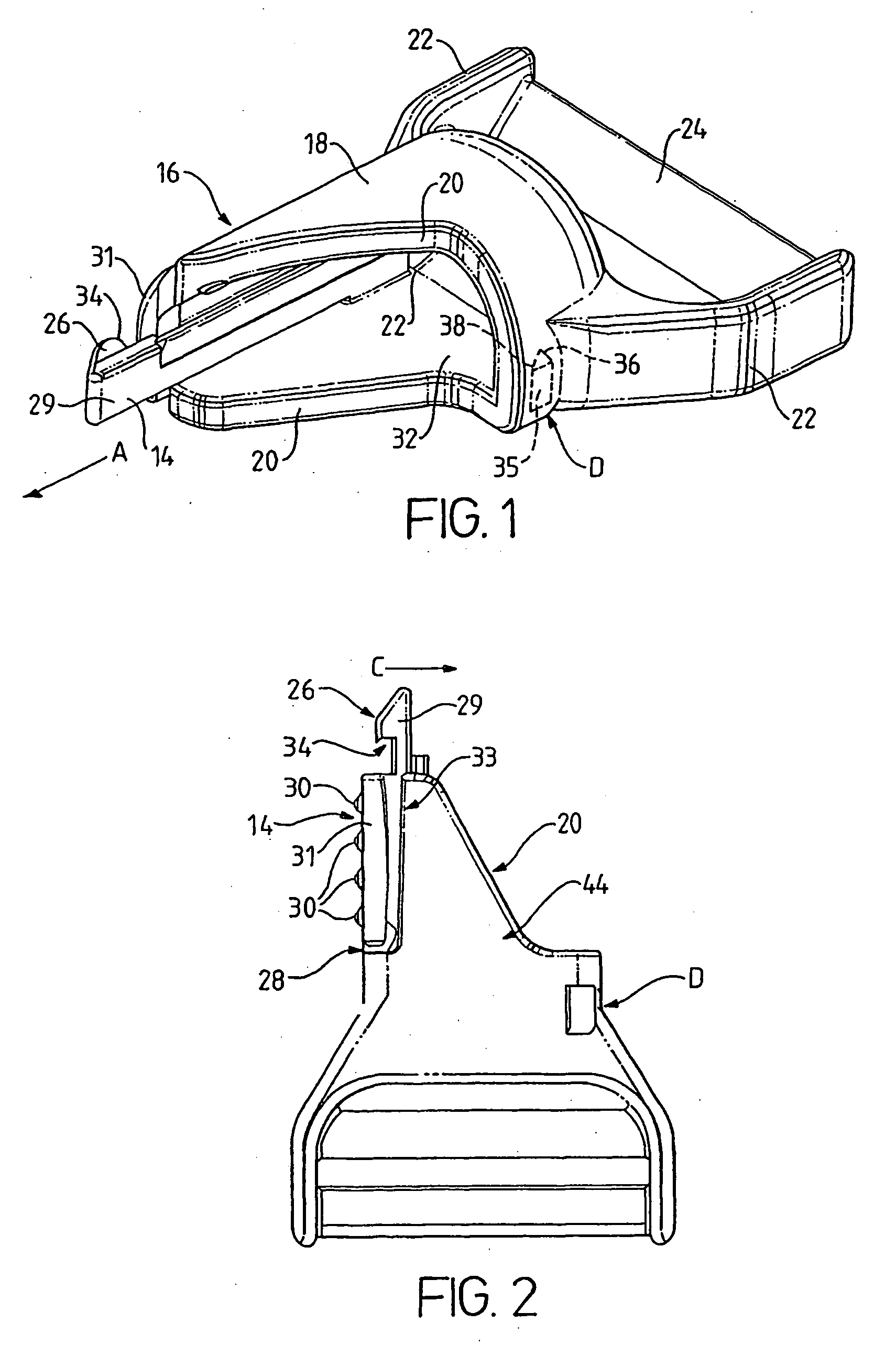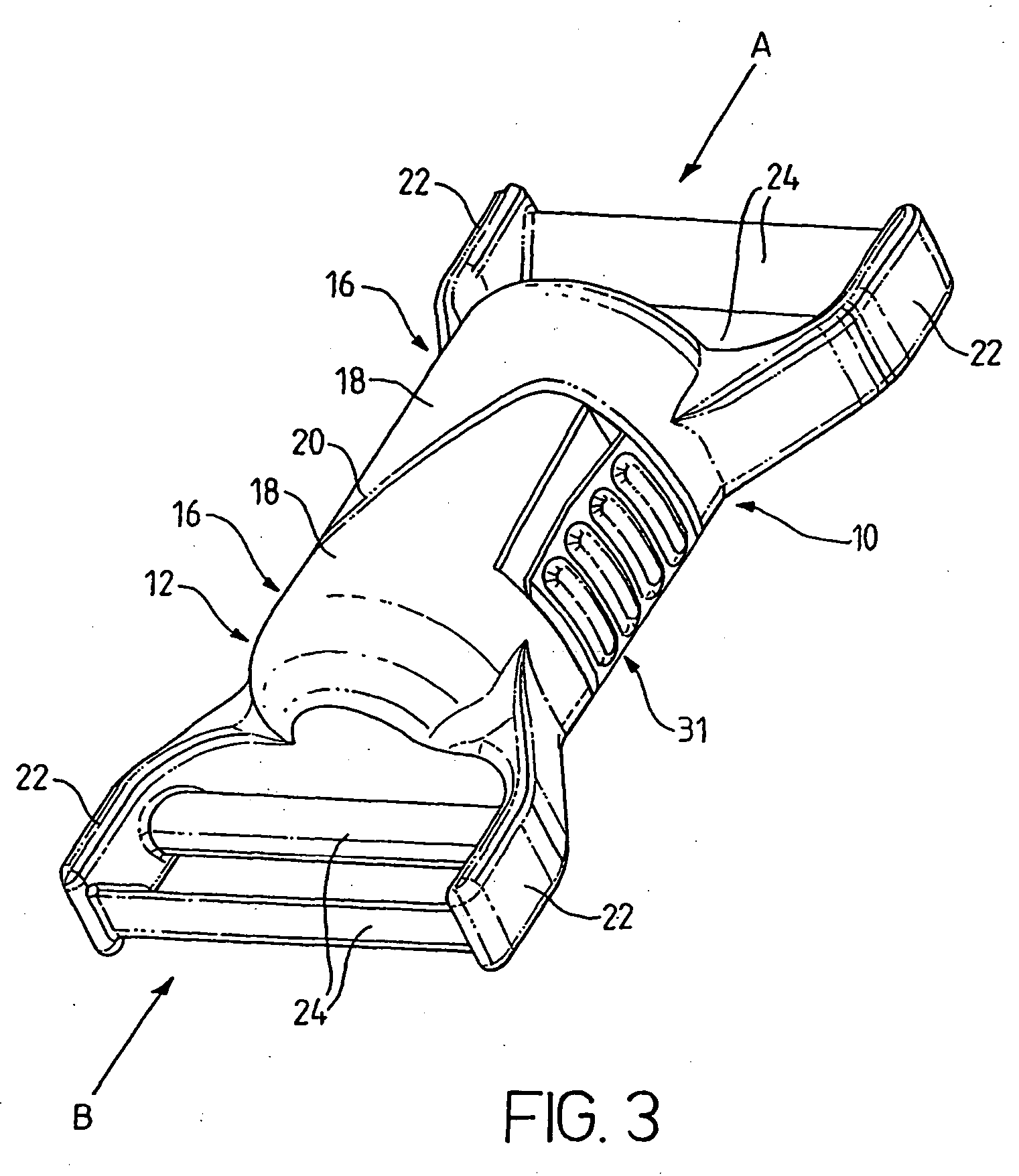Clasp
a clasp and sleeve technology, applied in the field of clasps, can solve the problems of difficulty in releasing the prong barbs from the channel openings, and achieve the effects of convenient packaging, convenient handling of parts, and convenient opening of clasps
- Summary
- Abstract
- Description
- Claims
- Application Information
AI Technical Summary
Benefits of technology
Problems solved by technology
Method used
Image
Examples
Embodiment Construction
[0022] Referring initially to FIG. 3, the clasp includes two identical parts 10 and 12 that are joined together to form a clasp. As will be described in more detail below, the clasp can be fastened by pushing the two parts 10,12 together in an axial direction indicated by arrows A and B for the two parts 10 and 12. The clasp can be opened by pressing on buttons 31 (only one visible in FIG. 3).
[0023] The two parts 10,12 each have a housing 16 formed by a rounded upper surface 18 and a flat bottom surface (shown in FIGS. 1 and 2). The two parts 10,12 abut each other along a diagonal interface surface 20.
[0024] At the rear of the housing 16, each part has a pair of forked arms 22 and a pair of bars 24 extend between these arms to form a ladder fastening for securing the clasp to webs or straps that are to be joined. The webs are threaded around the bars in a known manner. Alternatively, the webs can be stitched onto the bars 24.
[0025] Referring now to FIGS. 1 and 2, these Figures sh...
PUM
 Login to View More
Login to View More Abstract
Description
Claims
Application Information
 Login to View More
Login to View More - R&D
- Intellectual Property
- Life Sciences
- Materials
- Tech Scout
- Unparalleled Data Quality
- Higher Quality Content
- 60% Fewer Hallucinations
Browse by: Latest US Patents, China's latest patents, Technical Efficacy Thesaurus, Application Domain, Technology Topic, Popular Technical Reports.
© 2025 PatSnap. All rights reserved.Legal|Privacy policy|Modern Slavery Act Transparency Statement|Sitemap|About US| Contact US: help@patsnap.com



